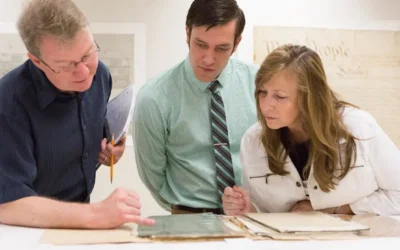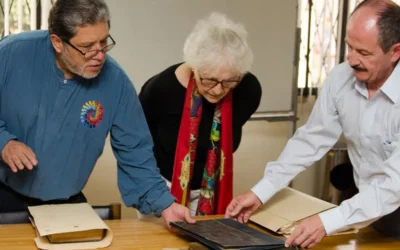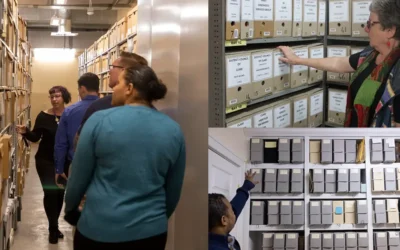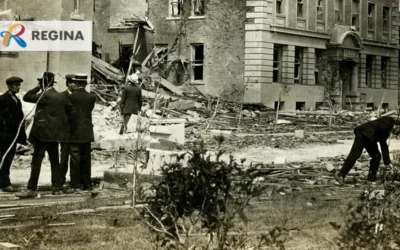Integrating Digital Preservation into Your Archives Program
Margot Note
The challenge that many archival repositories face is assimilating digital preservation activities into everyday workflows. In my past positions, preservation of digital assets was an afterthought—if thought about at all. As a consultant, I’ve found that planning for long-term digital preservation is still unclear in most digital initiatives. Awareness about digital preservation is growing, though work and education are still needed.
As materials become more accessible through digitization efforts, their preservation after the project is completed and the funding dispersed is not always thought about. Ironically, the discovery and development of digital preservation activities have been understood primarily through special projects. Most projects, of course, are supported by grant-based funding. Let’s face reality: most funders wish to support something innovative, like digitizing 10,000 artifacts during a grant reporting cycle, rather than preserving 10,000 digital images forever. As with many projects, the excitement lies in completing a bold new effort, not in maintaining the work once complete. All the efforts involved in creating digital assets are at risk if a digital preservation plan is nonexistent. As archivists, it is up to us to include the costs involved in digital preservation activities in our grant proposals, so that funders back work that has a long-lasting impact.
Digital as the Default
Preservation planning should be integrated into the project at its conception. With the ever-increasing amount of born-digital and digitized materials, archivists need to think and design their projects with digital as the default.
For digital preservation to become standard, it must be a quotidian process of archives, like appraisal or processing, integrated into workflows and procedures. Digital preservation will only be successful when it becomes embedded in how institutions manage and approach digital information and resources on an ongoing basis. It can no longer be viewed as a standalone activity.
Preservation Advocacy Strategies
Archivists can advocate for integrating digital preservation activities in their institutions by:
- Being prepared to articulate the value as well as the risks of digital preservation. What’s lost when information is not preserved properly?
- Building relationships with different departments at their institutions and sharing their expertise on good digital preservation practices.
- Learning about their organization’s current practices so that they can help identify gaps that threaten access to and re-use of valued digital information.
- Identifying ways to embed digital preservation strategies into everyday practice. How can resources that support digital preservation be included in project funding, staffing, and work assignments?
Dedication
Some promising changes that awareness about digital preservation has brought to the field are emerging. Libraries, archives, museums, and other institutions are starting a shift from temporary, externally funded posts in digital preservation to hiring full-time positions that are funded by operational budgets in Digital Preservation teams and departments. Dedicated positions are key to integrated digital preservation.
Preservation Capability Maturity Models
Maturity models also provide guidelines for improving digital preservation within institutions. The Digital Preservation Capability Maturity Model (DPCMM), developed by consultants Charles Dollar and Lori Ashley, for example, is a framework used to access a repository’s ability to preserve and provide access to electronic records. It assesses 15 facets, including policy, strategy, governance, collaboration, technical expertise, open source and neutral formats, designated community, electronic records survey, ingest, storage, device and media renewal, integrity, security, metadata, and access. Each component is given a range from 1 (nominal) to 5 (optimal). Organizations can use the model to plan on how they will improve their digital preservation endeavors.
The need for digital preservation remains urgent, demanding new approaches and new ways of addressing its challenges. Archivists need to consider different pathways so that digital preservation is embedded into business as usual. As the field develops, more archivists and information professionals are addressing digital preservation concerns and developing the tools to make a real difference in our digital future.
Margot Note
Similar Posts
Enhancing Collaboration; Methods for Archivists
Archivists can enhance collaboration through user-centric approaches and efficient processing methods based on customer service principles.
Navigating Selection in Archival Practice
The archival selection process is far from straightforward, given the limitations of long-term preservation and ongoing accessibility challenges.
Responsible Stewardship in Archival Practice
Responsible stewardship is a philosophy that guides the actions and decisions of archivists in safeguarding collective memory.
A Modern View of a City’s History via ArchivEra
Brief success story on City of Regina Archives’ use of ArchivEra to manage collections of legal, historical, administrative or financial significance
Hosting service
Enjoy all of the benefits of your Lucidea solution with secure, reliable, stress free hosting
Programs & incentives
No matter your size or budget, we’ve got you covered, today and tomorrow



